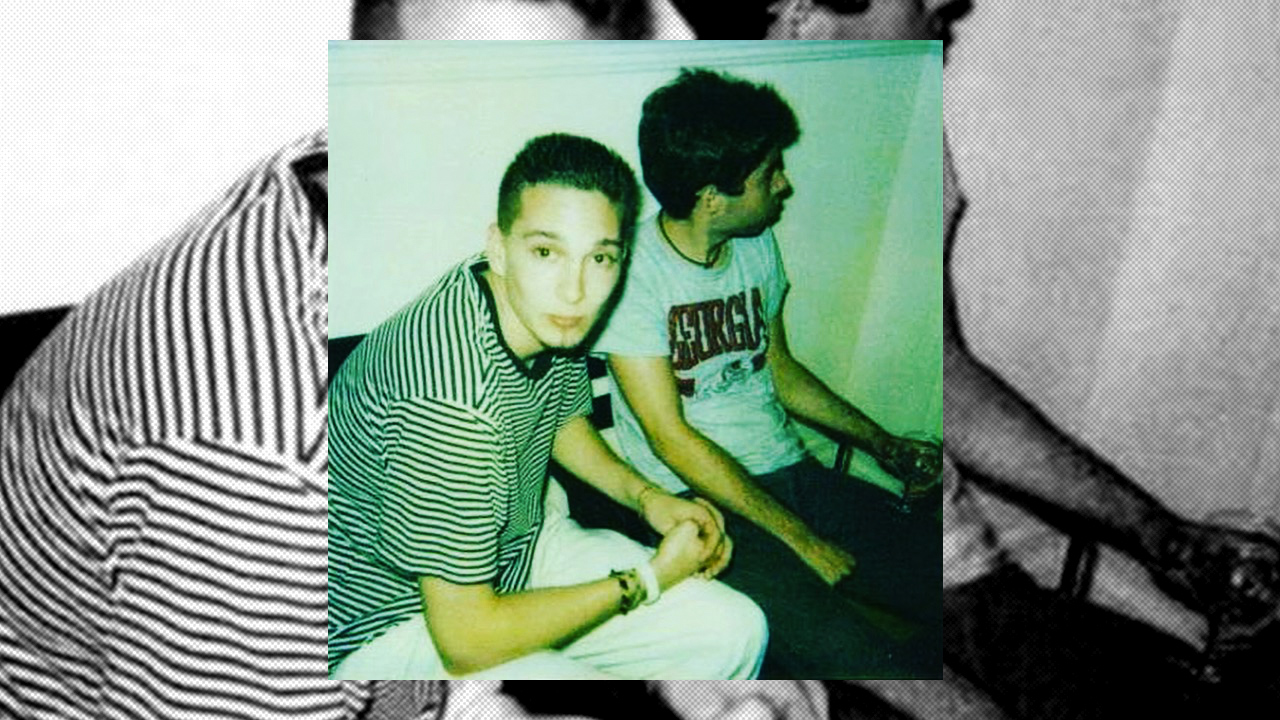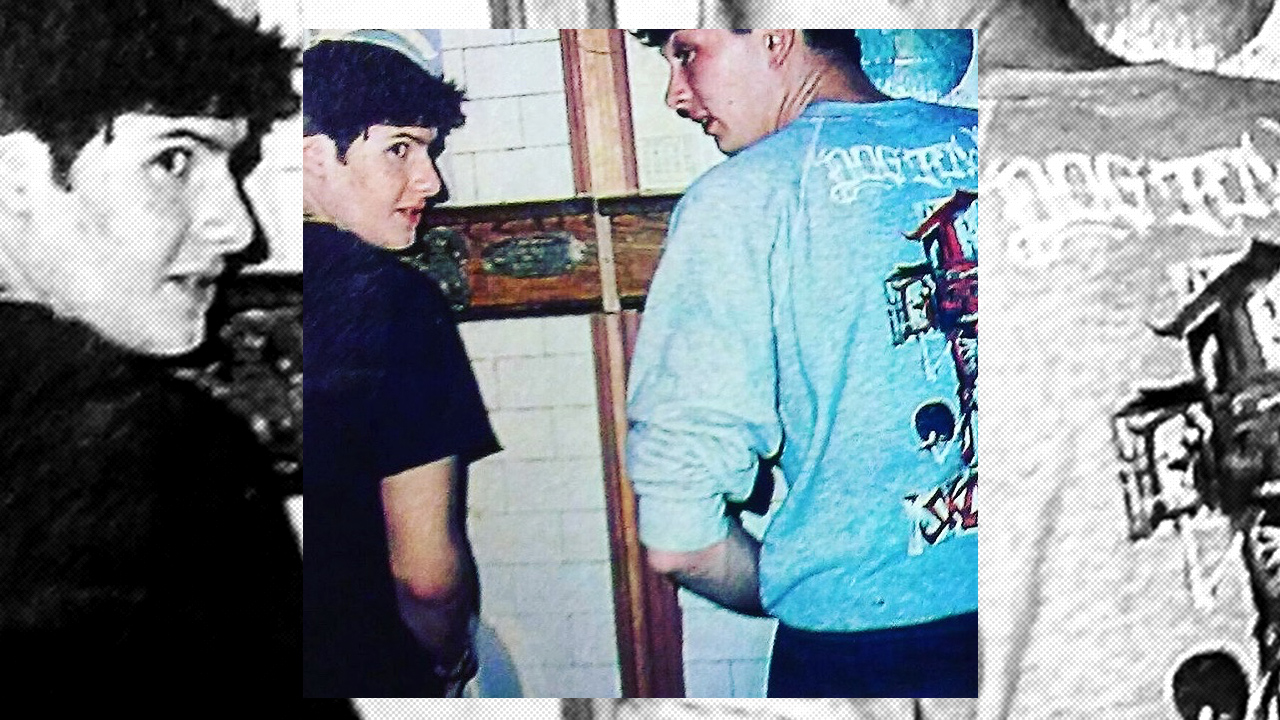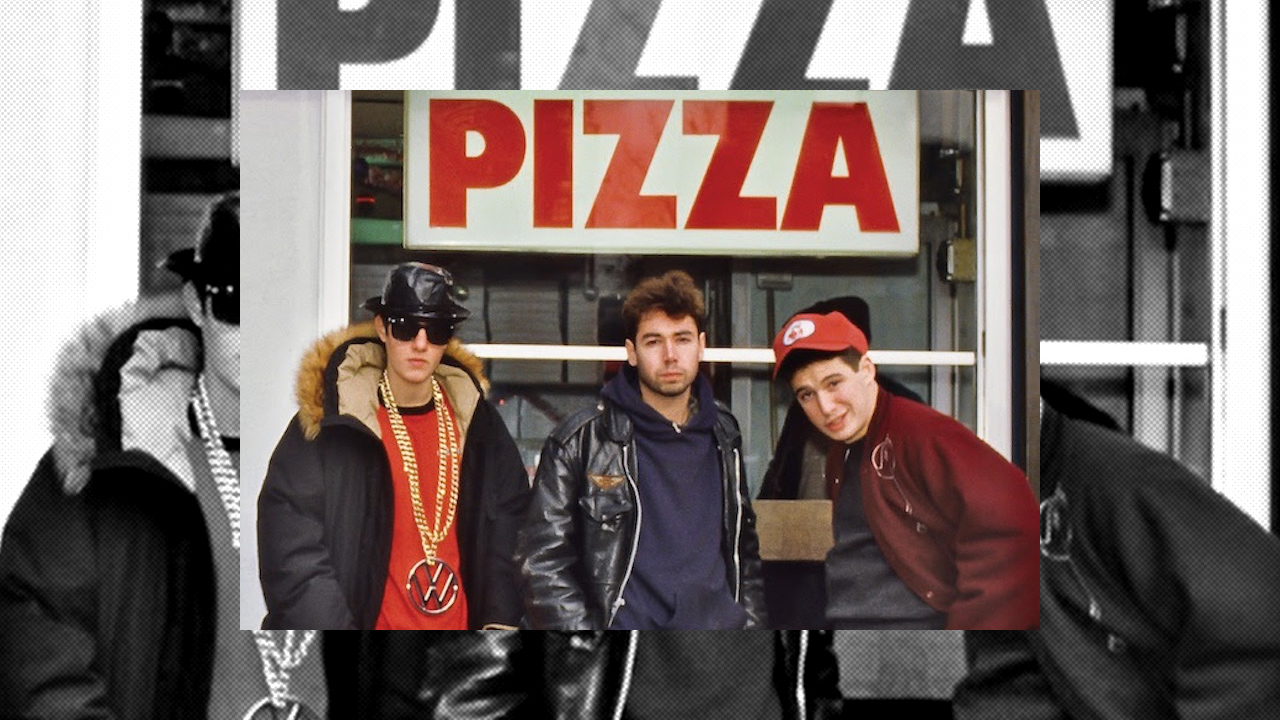
Let me get this out of the way: I am not objective when it comes to The Beastie Boys. This book review is no exception. I have a long friendship with the Boys; they got me my first job in the music business and subsequently altered the trajectory of my life. To say I’m eternally indebted would be an understatement. But that doesn’t mean I loved all their records. For me, the later ones didn’t have the energy of Licensed To Ill or Check Your Head. Point being, I call it as I see it, regardless of our shared adolescence. I mean… I’m a lifelong A&R guy, right? If the book were bad I would say so (in as diplomatic of language as I could manage). The book isn’t, so you’re spared my corny attempts at exercising diplomacy.
I’m also not going to pull punches about my nostalgia for the time period prior to when the Beastie Boys blew up. The era helped develop my critical eye. The music of the time had a certain vitality, New York was in the midst of a massive cultural moment, and… life felt simpler then. In fact, one of the beauties of this book is that it’s a celebration of that period of time in NYC, circa 80-81 — a common ground for my peers and me. In every chapter, the Boys remind us of the aesthetic of that period. While they obviously became uber-successful as a sometimes-instrument-playing hip-hop act, there was an early-80s punk rock mentality embedded in everything they’ve ever done, on some level or another. Post License To Ill (more on that later) it was a strong component in how they approached making music, how they redirected their collective energy, and why they are (in my un-humble opinion) the greatest hip-hop band ever, and one of the greatest NYC bands of all time. Right there with The Ramones, The Bad Brains and Run-D.M.C. for me. Period, end of story.
The Beastie Boys Book is a comprehensive look back at the band’s storied career. It leaves no stone unturned. One of its many charms is the amount of gratitude bestowed upon their many friends; their musical and cultural compatriots, if you will. There’s a lot of space dedicated to the acknowledgment of their idols and the eclectic influences that shaped them. The fact they can remember all these places, shows, bands, tours, and people is a testament to Mike D and Ad-Rock’s impressive memory banks. The chronological order of such is brilliant. For the young reader, it’s a time capsule; for me, it was a chance to travel back through my own life. I remembered hanging at Rat Cage Records daily in the summer of ’81, the smell of TR3 where I first saw Madness and The Bad Brains perform, and the thrill of watching the Boys from their humble beginnings in small clubs during their neophyte rap period.
Watching them reminded me why I signed artists in the first place, and how satisfying it felt when they’d go on to be famous. That feeling of early success is filled with innocence — it’s wonderful, daunting and, at times, embarrassing. In the book, the Beasties look back at it with clear-eyed honesty and a little bit of discomfort. They also do it with an understanding that sometimes you become what you hate; moreover, you may just end up loving what you set out to destroy. This is chronicled in depth when they look back on their License To Ill days.
I love the admission of flaws that the book examines. There were mistakes made, in particular, the ousting of Kate Shellenbach from the original rapping Beasties. They own their bullshit and they also know that she wouldn’t have worked in the new Beasties. Rick Rubin is given a lot of love throughout, but he’s also held to his actions — including financial discrepancies and an encouragement of macho chauvinist perspective (which the Boys willing signed on for, hook and sling). They pull no punches in copping to the hydraulic penis and go-go-dancer-in-a-cage moments in their careers. They laugh at it, while admitting to being swayed toward becoming frat rock bozos only to get trapped in that persona. I mean… all they really wanted to be was Run-DMC and somehow it became this thing, only to find out that the thing wasn’t what they wanted to be.
Adam and Mike chronicle the redirecting of their energies, the escape from Def Jam, and how they kept it moving. This to me was so punk rock, as was the way they explained the move to LA, the new world they entered there, the making of Paul’s Boutique and all the charades that surrounded it. The record business also gets put on blast throughout the book. The anecdote about the then-president of Capitol Records, Hale Milgram (we called him Pale Pilgrim at Elektra), and his shelving of the Beasties for Donny Osmond is such a classic record biz story it would almost sound like a cliché… if it weren’t true. They chronicle the commercial failure of Paul’s Boutique, which is examined in full (my critique of it is in the book, embarrassingly enough) and how this commercial failure allowed for the career and game-changing Check Your Head. The building on mistakes is a recurring theme.

The sidebar sections of the book were worth the price of admission on their own. The Luc Sante portion of the book made me cry and smile at the same time. It reminded me of an NYC that’s long gone — one that felt inspiring and made New York the center of the whole music world. Jonathan and Blake Lethem’s chapter may be the best explanation of the perennial attraction of rap music to middle-class white boys. (Shout out to audio books too, by the way. The Cookie Puss history lesson was a laugh riot, as was Will Ferrell’s mock review of Hello Nasty.)
The sheer amount of information in the book is mind-boggling. How did the Boys remember so much shit while I can’t remember my girlfriend’s name from 1994 and we lived together for 5 years? It’s uncanny and completely wonderful for students of history like myself, even if I was around for some of the shenanigans.
That’s not to say that it’s all fun and games. I was seriously moved to tears several times while reading the book. Particularly in the chapter about our dear friend Sean Carasov AKA The Captain AKA Captain Pissy. His passing and distance from the Boys leading up to his passing was hard to read. The celebration of my teenage best friend John Berry and his ultimate departure from the band was insightful and honest. The tale of Dave Parsons — the person who owned the Rat Cage and released PollyWog stew and Cookie Puss — was something I didn’t know. We all loved Dave, but it took the book for me to hear of Yauch convincing the boys to pay for his sex change operation while he was in the last years of his life, so Dave could die as she. It’s also a testament to Yauch that he did this and kept it to himself, yet another reason we loved the guy.
Love for fallen friends and is a constant in the book. Things like this happen again and again throughout. The good and the bad, it’s all in there.
I loved so many parts of the book that I feel like I can go on for ages. The story of “Get It Together” was epic. The tales of Q-Tip and Afrika from Jungle Brothers playing hoops at G Sun studio — hilarious. The Perry Farrell Lollapalooza story made me laugh out loud. Mike D’s insight into the early development of streetwear was groovy. The love the Boys have for Mario Caldato Jr. is duly noted, as is their admission that when they stopped working with him it affected the quality of the music. He comes across like the real fourth Beastie and from my POV he was the glue that held it together; the technician who helped them realize their visions. The celebration of Key Board Money Mark is full of love and awe for his talents. The reverence for their musical peers — whether Sonic Youth, The Bad Brains, Run DMC, Tribe, Ian Mckaye, or Mike Watt — always reads as heartfelt.
Above all this, there’s a certain yin and yang to the book and of the Boys’ story. Great highs, real-life lows. Victories and defeats. Love and loss. There’s an acknowledgment that they really are some of the luckiest people on earth, stated over and over again. Let’s keep it 100 though — they are also some of the smartest culturists to ever make music, which I’ll say, ’cause they won’t. Their forward-thinking, completely unique, and DIY way of doing things was, once again, rooted in punk rock. They solidified the connection between the punk ethos and hip-hop in a way that has rarely been done before or since.

The book is full of photos of people, places things that are now a part of our everyday cultural existence. From the record graphics to the ridiculous sense of humor, it feels like one big inside joke that we’re all allowed in on. A more personal Grand Royal. I particularly loved hearing tales about shit I never heard before. Ad-Rock’s story about the temporary percussionist Josh was side-splittingly funny, as were his tales of Yauch and the Ring. Mike D’s s stories about record shopping and wearing his landlords outlandish ’70s outfit while talking to Bob Dylan at a Hollywood shindig is so crazy you almost can’t believe it happened.
Then there are the mixtapes. Throughout the whole book, the Boys make mixtapes. They talk about the mixtapes in depth. It gives us a real look into what made the Beasties tick. I shared a lot of this musical common ground with them, but even I was surprised a few times. These days you’ll find me taking a deeper dive into Brazilian music and revisiting the Slits and The Raincoats and a plethora of Lee Scratch Perry tracks (Ad-Rock’s personal favorite). Speaking of Lee Scratch Perry, the story of getting him to the studio for a Hello Nasty session during the NYC Halloween parade is amazing, as are the reviews of the records done by Adam and Mike themselves. Who does that and who does it honestly? Makes me also feel lucky to have been friends with the Boys, something I am acutely aware of every time I wake up and still have a job.
There’s this one thing about the book that hit me the deepest: It is, in effect, a love letter to Adam Yauch. Look, I don’t want to get all sentimental here, but Yauch was a special cat. He was hilarious, deep, extremely talented and most of all — within the group — the motivator. He did what so few musicians have ever done before: He lifted our collective consciousness, with his Milarepa Fund and The Free Tibet concerts, several of which I was lucky enough to attend in person. He’s in that rare category of musicians with Bob Marley, John Lennon, and Stevie Wonder. People who created spiritual change in the world, something I sometimes forget cause he was also just a cool cat. He made shit happen, time and time again.
Yauch was brilliant in his want to explore new ground spiritually, culturally and musically. He also loved a good fart joke. He was mischievous, clever, and possibly the best rapper in the group, in terms of traditional rapping skills. Above all things, the book is a testament of Mike D and Ad-Rock’s love for their brother. It also feels like a cathartic exercise, an attempt to heal themselves from the loss of their brother. It’s understandable and was a little painful for me to read in parts. It’s also beautiful and celebratory and ultimately triumphant in its tale-telling. Just the very idea of Mike D and Yauch witnessing Kurtis Blow trying to breakdance in 1982 is mind-boggling.
For me and I suspect for many Beastie fans, friends, and family the book reads like one last, great Beastie Boys record. A grand finale. For this and all they have given me as a fan, all I can do is say thanks for altering my world yet again.

Beastie Boys Book is out now. Get it here.






